Health
A Comprehensive Guide to Wellness
- Introduction What is Health?
- Part One Nutritional Health
- Part Two Men’s Health
- Part Three Women’s Health
- Part Four Mental Health
- Part Five Romantic Health
- Part Six Financial Health
- Part Seven Recovery Health
- Part Eight Healthy Lifestyle
- Part Nine 45 Health Tips from LVAC
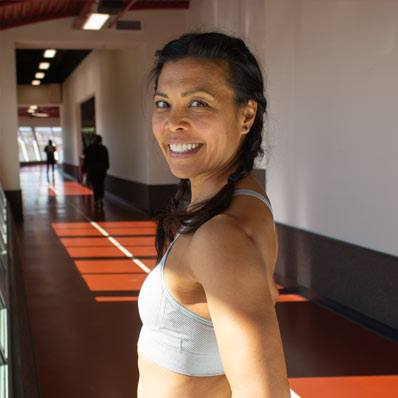

Fatima V. has been a proud Las Vegas Athletic Clubs’ member since January 2000. She was born and raised in Southern California but relocated to Vegas from Boston in the fall of 1999. She feels most in her element when teaching yoga.
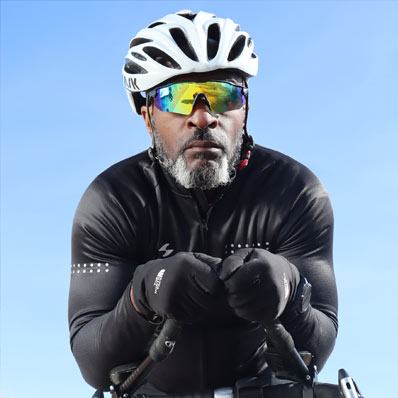

Ajani S. was born in Alaska but moved to Las Vegas from the island of Oahu in 2012. Since joining Las Vegas Athletic Clubs, Ajani says he has swum more in the last six years than he has in his entire life. He is proud to call LVAC his new home.


Toshie B. has been a club member for about 23 years and an instructor for 8. She was born in Tokyo, Japan, and moved to Las Vegas in 1997. She loves teaching BodyPump, BodyCombat, Cycle, and H.E.A.T.


Nathan P. has been a member of Las Vegas Athletic Clubs since 2013 and loves a good superset. He and his wife, Miranda have been together for 8 years and enjoy camping, hiking, and going to the lake. They also love spending time with their pug, Oliver.


James H. is a former collegiate football player, NSCA certified personal trainer, Precision Nutrition specialist and Crossfit Level 1 Trainer. After being in the health and fitness industry for more than 10 years, James joined LVAC in 2019 as the TEAM Training Manager. James loves cooking with his two daughters to teach them healthy habits.


Alan G. had been a member of Las Vegas Athletic Clubs for 26 years and started teaching in 2002. He’s the creator of 8Strikes, a 2x “Best of Las Vegas” fitness program that uses the 8 points of contact in Muay Thai. He has been married to his wife, Kristee , for 10 years and says that he would have never met his wife if he hadn’t become an LVAC instructor. They love hiking, taking trips, and raising their 2 boys in their free time.
Introduction
What is health?
Welcome to our health and wellness issue, where we focus on providing comprehensive and informative content on various aspects of health and wellness. We believe that health is more than just the absence of illness, it encompasses a holistic approach to well-being. This issue covers various topics related to physical, mental, emotional, and sexual health, as well as nutrition and lifestyle.
At LVAC, we recognize that men’s health is different from women’s health, and we provide content that addresses the unique health concerns of both genders. We understand that men and women have different physiological and hormonal characteristics, and we’ve tailored our articles to provide gender-specific information that helps you achieve optimal health and well-being.
Physical health is an essential component of overall wellness, and we recognize that it’s important to prioritize physical activity, healthy eating habits, and regular checkups to maintain a healthy body. We provide practical tips and advice on exercise, healthy eating, and preventive care, as well as information on common medical conditions and treatments.
Mental health is equally important, and we recognize that it’s essential to take care of our minds as much as our bodies. We provide content on mindfulness, stress reduction, and techniques for improving mental health, as well as information on mental health disorders and treatment options.
Nutrition is a crucial component of overall health and well-being, and we recognize the importance of a balanced and healthy diet. We provide content on healthy eating habits, food preparation, and cooking, as well as information on various diets and nutritional supplements.
Sexual health is also an important aspect of overall wellness, and we provide content on safe sex practices, contraception, and sexual health disorders. We recognize that sexual health is an essential component of our readers’ lives, and we aim to provide information that helps them maintain a healthy and satisfying sex life.
We also recognize that health is influenced by various lifestyle factors, including sleep, stress, relationships, and more. We provide content on various lifestyle factors that impact health, as well as tips and advice for living a healthy and balanced life.
At LVAC, we believe that health and wellness are essential components of a happy and fulfilling life. It is our hope that this interactive issue will provide you with informative and entertaining content that helps you make informed decisions about your health and well-being. Whether you’re looking to improve your physical fitness, mental health, or nutrition, this issue has something for everyone. We hope you enjoy reading and find it helpful on your journey to looking better, feeling better, and living better.
In health,
Emily Hamill
Editor-in-Chief
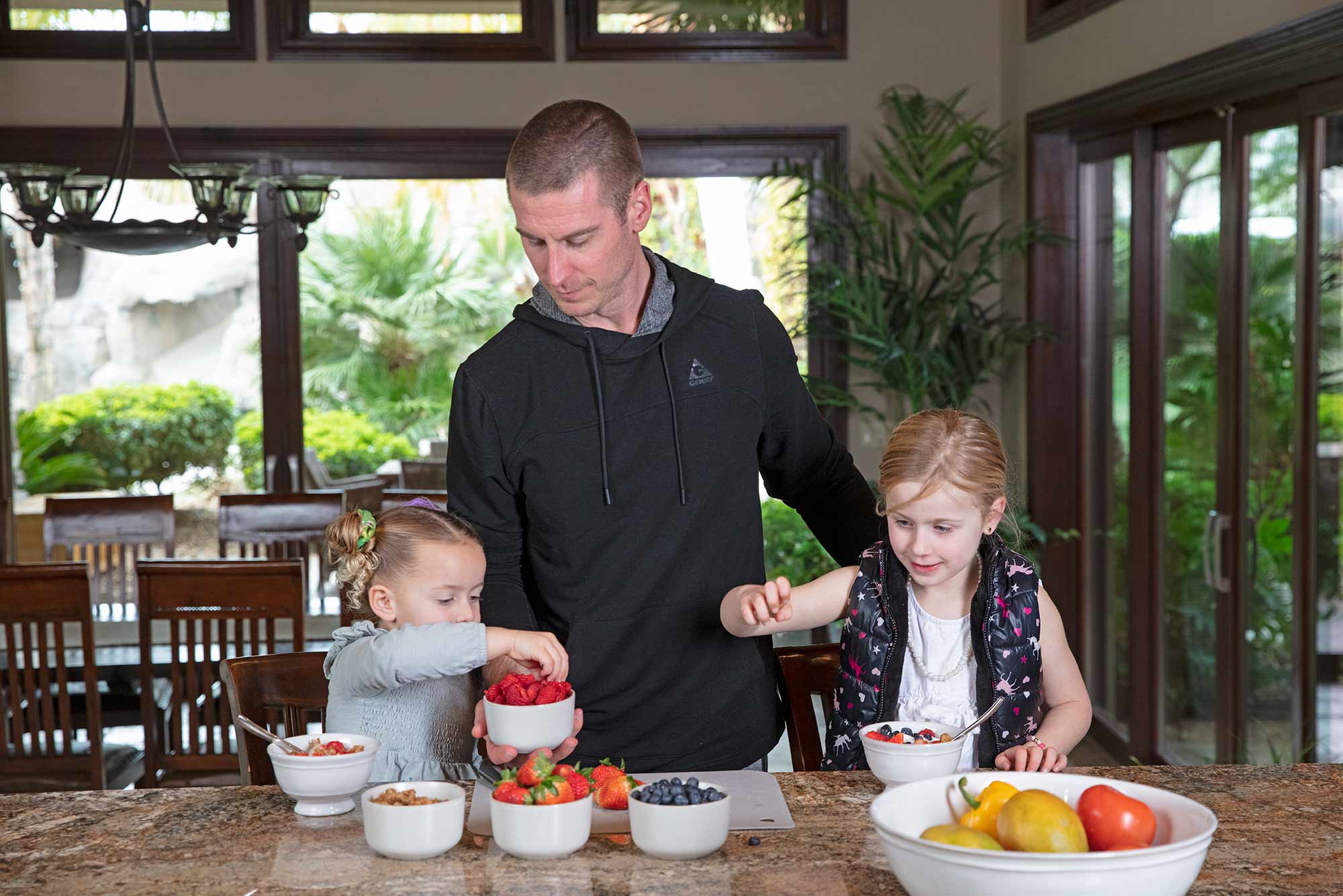
Nutritional Health
The Effects of a Healthy Diet on Fitness
Author: Anthony Dimarino
In today’s society, most people have their own opinions and definitions for terms associated with health. One term that gets thrown around often is “wellness .” We hear about it all the time. “Wellness” is utilized most often to sell products and services, teach about lifestyle, and even build social media followings. But what is wellness? It depends on who you ask and in what context.
There is no single agreed-upon definition for the term. In fact, “wellness” can cover many subjects: physical, emotional, spiritual, relational, mental, or financial. More so, each aspect of wellness can contain specific subtopics. For example, nutrition, fitness, and sleep are sub-topics for physical wellness. This article will further explore how eating healthy improves your wellness and fitness.
Defining a Healthy Eating Plan
Seeking out information about a healthy diet plan can be daunting and confusing. The art of eating well seems lost, and diet fads and even more people promoting them each year resurface.
In simple terms, a healthy eating plan should include these components:
- Easy to understand and follow
- Include all food groups in reasonable portion sizes
- Meet the nutritional needs of an individual
- Help the individual meet their goals
- Is evidence-based

Some Red Flags to Look For
You must be careful about which meal plans you select to prevent any short-term or long-term negative results. Many eating plans you can find on the internet are likely not healthy, nor will they improve athletic performance. If a diet plan you find includes any of these factors, look elsewhere for a better alternative.
- Promotes rapid or unreasonable weight loss
- Focuses on one single food or group
- Cuts out one or multiple food groups
- Is promoted by a celebrity or non-health professional
- Lack of scientific evidence it works
The Effects A Poor Eating Plan Can Have on Wellness
Eating an unhealthy eating plan can have detrimental effects. In the short term, a healthy meal plan that is too high or too low in nutrients can cause low energy, low strength and performance, dehydration, and digestive problems. In the long run, a poor eating pattern can cause chronic illnesses such as obesity, high blood pressure/heart disease, cancer, diabetes, and liver disease. Following a well-rounded meal plan is essential to prevent these harmful effects.
Some actions to consider:
- Choose several balanced meals daily
- Focus on low-calorie beverages, especially water
- Limit eating or snacking when you are not hungry
- Choose primarily unprocessed, whole-food options
- Eat mainly from the 5 main food groups: fruits, vegetables, whole grains, lean proteins, and low-fat dairy
The term “wellness” has been an overly debated topic. There are many definitions out there. In order to improve your overall wellness, it is prudent to do your homework and follow high-quality meal plans and lifestyles. You can find more resources about healthy eating and wellness from your physician, dietitian, or organizations such as the Academy of Nutrition and Dietetics, the American Heart Association, the USDA, and the American Diabetes Association.

Men’s Health
Top 5 Major Health Problems Among Men
Author: Vincent Dada
A universal right to a lifestyle that fosters accessibility and well-being is intrinsic to every human being. To accomplish this, individuals must be provided with the knowledge necessary to prevent the most prevalent health conditions within their demographics. Men, in particular, can benefit from having an open dialogue about these health concerns and how to address them.
In this article, we will explore the most common health issues among men and offer guidance for effectively managing these afflictions.
The top 5 issues are:
- Heart disease
- Depression
- Prostate cancer
- Erectile dysfunction
- Diabetes
Heart Disease
Heart-related diseases are a leading cause of death globally, especially among men in the United States.
According to the Centers for Disease Control and Prevention, half of male deaths caused by coronary heart disease showed no previous symptoms. Men’s heart health, therefore, should be actively protected.
Once you start experiencing chest pain, dizziness, frequent fatigue, shortness of breath, and other symptoms, seek medical help. Regular health exams can also help you prevent and monitor this disease.
Men can also prevent heart disease by:
- Eating healthy diets
- Reducing smoking/alcohol intake
- Exercising daily
- Monitoring blood pressure
It is never too late to protect your heart. For example, exercise doesn’t always have to be done in a gym setting. In fact, your heart will benefit from aerobic activities such as brisk walking, jogging, swimming, etc. Combining this with healthy diets, such as vegetables and fish high in omega-3 fatty acids, will help you achieve more protection against heart diseases.
Depression
Historically, men’s mental health has been disregarded due to certain beliefs and societal norms. Men are more prone to various mental health issues, such as depression, suicide, and more, that can occur at any age.
Depression is less likely to be reported in men than in women. This is because men are less likely to seek medical attention.
The feelings could manifest as symptoms such as persistent anger, difficulty concentrating, loss of appetite, feelings of worthlessness, etc. It’s not easy, but you must be honest about your feelings and willing to get help. A licensed mental health physician, certified counselor, or clinical psychologist can provide support through medication and/or counseling.
Research has also shown that environmental stress is a trigger for depression. Therefore, you should invest in healthy activities and quality relationships that support you. You are not alone!
Prostate Cancer
Cancer can manifest in any human regardless of age, race, or gender. However, the prostate is an organ restricted to the male’s reproductive system, so its associated problems are specific to men.
The Prostate Cancer Foundation reports a new case diagnosed every 2 minutes, with another death from prostate cancer occurring every 15 minutes worldwide. It is also shown that every 1 in 8 men will be diagnosed with prostate cancer. Although there are no unique warning signs, risk factors can include aging, smoking, obesity, etc.
As you work to avoid the risk factors, you should get screened early and take steps to remain healthy. If the disease is caught early, treatment can begin immediately, reducing the likelihood of fatal effects.
Erectile Dysfunction
According to Men’s Health Facts, erectile dysfunction is common in middle-aged men and those over 75 years old. It is a significant concern for men because of its impact on their sexual and mental health.
Therefore, as soon as you discover that you cannot maintain or even have an erection, you should consult a doctor. You may be given medications to improve the condition.
The curability of this condition depends on the cause of the dysfunction. It is also found that treatment improves when men tackle underlying illnesses and surround themselves with supportive partners.

Diabetes
According to the World Health Organization, diabetes is a chronic, metabolic disease characterized by elevated blood glucose levels leading to severe damage to several body organs.
The Centers for Disease Control and Prevention explain that men who weigh less than women are 2 times more likely to have Type 2 diabetes. This is because men have more fat stored around their abdomen. This condition can be managed with medications and lifestyle modifications, improving the overall quality of life.
The onset can be delayed or avoided by:
- Following a healthy diet
- Ensuring 30 minutes of physical activity daily
- Avoiding tobacco use
- Adhering to medications
- Monitoring blood sugar regularly
- By following these guidelines, the effects of diabetes can be reduced.
Conclusion
Men’s health is unique and nuanced at every stage of life. In order to prevent life-altering diseases, it is best to get annual health exams and practice healthy habits such as healthy eating, frequent exercising, and positive self talk. Making these changes can help you begin the process of taking control of your life, one step at a time.

Women’s Health
Top 5 Women’s Health Issues
Author: Mahalakshmi Babu
Most women admit that they spend little time nurturing themselves, even when doing so would benefit their physical and mental health. In order to raise awareness, this blog will cover the top five health issues among women, along with practical tips.
#1. Heart disease & stroke
An alarming new study[1] published by the Journal of the American Heart Association finds that women may not be aware of the symptoms that indicate cardiac arrest, nor if they are at risk. The study also found that heart disease among women is often underdiagnosed and undertreated. What is more concerning is that healthcare providers often dismiss warning signs. This is especially true for women of color, who typically wait longer to see a physician.
How can you lower the risk of heart disease?
Common symptoms include:
- Chest pain
- Weakness in the arms
- Shortness of breath
- Nausea and vomiting
High blood pressure, high cholesterol, and lower estrogen (menopause) increase the risk of heart problems. Be mindful of these symptoms and notify your doctor’s office if you are experiencing anything unusual. It could protect your life.
- Avoid a sedentary lifestyle, and make it a point to stay active.
- Choose heart-healthy wholesome foods.
- Schedule regular health checks with your doctor
#2. Breast cancer
It is the most common cancer in women, second to skin cancer. Data from the American Cancer Society reveals that the average risk for a woman in the United States is about 13%[2].
How do you reduce the risks of breast cancer?
Monthly self–examination for abnormal lumps and changes in your breast should be a regular practice. Inform your doctor immediately of any abnormal changes to your breasts or nipples, and schedule an appointment for a thorough checkup.
- Reduce alcohol intake, and quit smoking.
- Stay physically active
- Reach for vegetables like cabbage, cauliflower, and broccoli. Include antioxidant-rich fruits such as berries.
- Schedule a yearly mammogram
#3. Gynecological issues
PCOS, birth control, and menopause are common for women, while the riskiest are ovarian and cervical cancers. Ovarian cancers are often unknown until they spread outside the ovaries. This is because they show no symptoms. Cervical cancers, on the other hand, are brought on by abnormal cell growth. Human Papillomavirus (HPV) is the most prevalent risk factor.
How can you lower the risk?
Schedule annual health checkups with your gynecologist. The periodic health check includes OBGYN procedures such as a pelvic exam, breast exam, pap smear test, or ultrasound which may help determine the risks for both cancers. Most insurances cover these exams.
- If you are overweight, changes can be made to achieve the ideal body range for your height.
- Avoid other risky habits such as smoking, excessive alcohol intake, and processed food consumption.

#4. Osteoporosis
Although postmenopausal women are more prone to this bone-weakening disease, factors such as genetics, early menopause, unhealthy habits, certain medications, and more can make you more susceptible to weak bones.
How can you lower the risk?
Start weight-bearing exercises: Exercises such as low-impact aerobics, dancing, yoga, and weight/strength training, helps to rebuild bones[3][4].
Include calcium-rich foods: If you are trying to avoid weight gain, plenty of non-dairy calcium-rich sources such as kale, spinach, sesame seeds, and soy products can help to improve your dietary calcium intake.
#5. Depression
Research shows that depression is two times more likely to affect women than men[5]. Women may develop depression during different phases of the reproductive cycle. One of them is premenstrual dysphoric disorder (PMDD). This condition causes anxiety and depression the week or two weeks prior to the start of a period before subsiding once it starts. Other phases include pregnancy-induced depression, postpartum depression, and menopausal depression. Other events, such as infertility, miscarriage, and oral contraceptives, can also lead to depression.
How can you lower the risk?
- Staying physically active
- Light therapy and nature walks
- A wholesome, healthy diet that includes folate and omega-3 fats.
- Joining a health club or volunteering for a cause
You may have noticed that staying physically active is a consistent risk-reducing factor among the issues above. Getting physically active and staying motivated with a group of like-minded individuals is easier than ever. LVAC not only offers exclusive training areas for women but a plethora of exercise classes and amenities. Pick a class that matches your schedule and tackle the major women’s health issues of 2023.
[1] https://www.ahajournals.org/doi/10.1161/JAHA.121.024199
[2] https://www.cancer.org/cancer/breast-cancer/about/how-common-is-breast-cancer.html
[3] https://www.bones.nih.gov/health-info/bone/bone-health/exercise/exercise-your-bone-health
[4] https://www.health.harvard.edu/staying-healthy/slowing-bone-loss-with-weight-bearing-exercise
[5] https://www.sciencedirect.com/science/article/abs/pii/S0026049505000363
[6] https://www.ncbi.nlm.nih.gov/pmc/articles/PMC6589172/
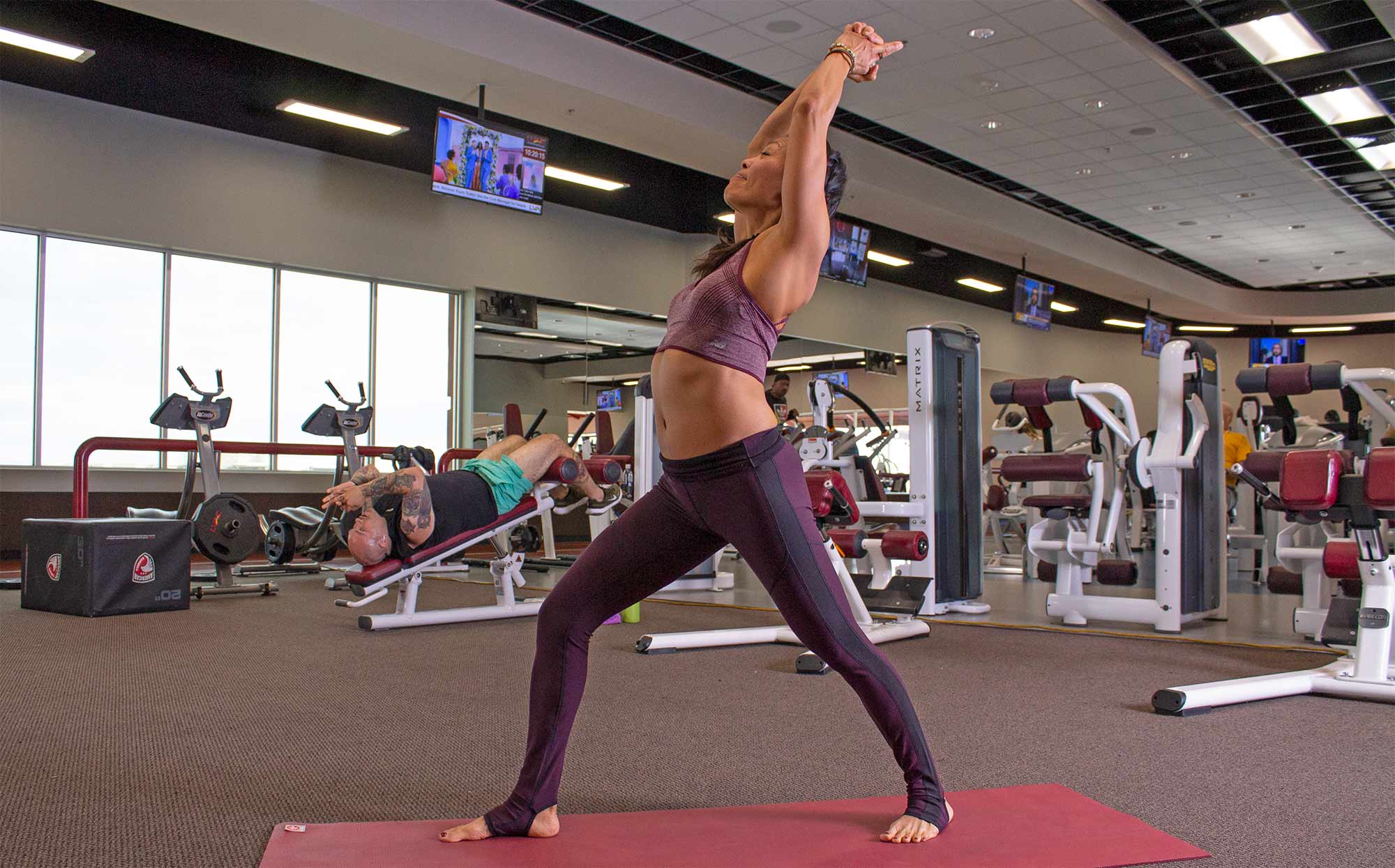
Mental Health
Mental Health Blocks that Keep You From the Gym & How to Overcome Them
Author: Lauren Esmay
Hitting the gym day in and day out shows dedication. It helps build character as much as it helps build muscle. It reveals the benefits of commitment and teaches us how to show up in multiple areas of our life. However if going to the gym has become a regular part of your life, you have probably experienced physical or mental setbacks. Mental roadblocks are to be expected at times throughout our fitness journey, and our response to these obstacles can help us return to our routine without too much disruption.
Self-Doubt
“I’m not able to do pull-ups.” “I’m bad at running.” “Burpees are too difficult.” Self-doubt can creep into your workout routine in subtle, yet impactful ways. Many of us have faced self-doubt along our fitness journey. As a lifelong runner, I never put an emphasis on lifting weights until a few years ago. I was confident in my ability to run, but lifting weights? Absolutely not! I knew that lifting weights would create more muscle and make me a better runner. You may not be able to crush a competitive goal or lift a hefty number of weights in the beginning, but overtime, you can make small improvements to reach your goals to squash self-doubt.
Stress
Work commitments. Family obligations. Deadlines. All of these create stress, and sometimes it is completely overwhelming. Stress can leave us deprived of energy and sleep, leading to mental hurdles in the gym. Ironically, scheduled workouts at your gym can help manage stress brought on by other responsibilities in your life.
Burnout
Have you ever forgotten your post-workout snack and felt the energy crash on a drive home? Burnout feels like this, just on an emotional level. We often hear about burnout when our jobs have become stressful with never-ending deadlines, projects, and working overtime. If not addressed properly, burnout can lead to injury or declining mental health.
Burnout can be caused by various factors, including:
- Performing the same workouts day in and day out
- Sustained overwhelming stress
- Not taking enough rest days
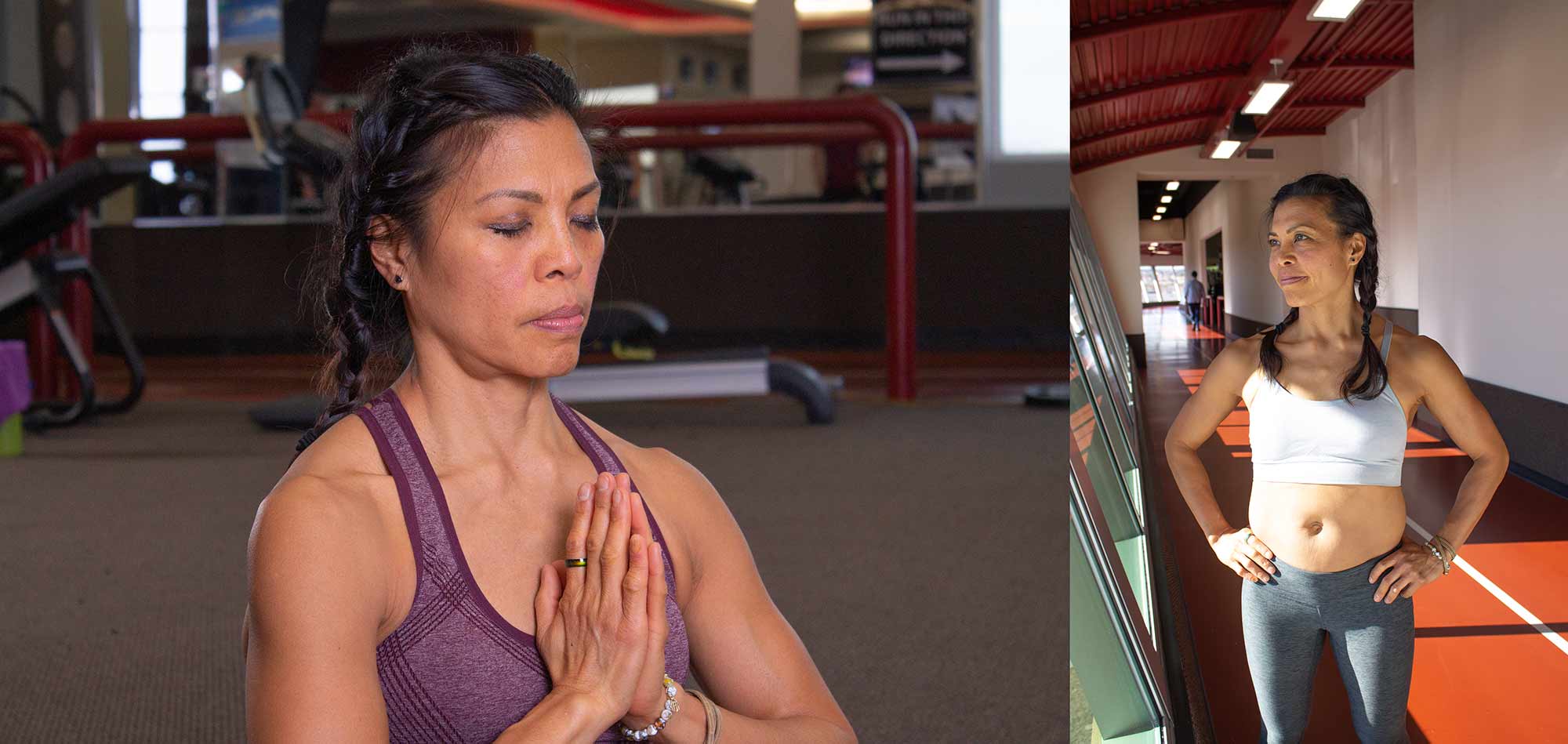
Overcoming Mental Blocks
So, what happens when we meet mental roadblocks? We develop tools to help us overcome them both physically and mentally. Here are a few ways you can do to get started:
Mental Block Toolbox:
- Identify your mental block (fear of failure, impostor syndrome, stress, etc.)
- Keep a journal (workouts, nutrition, energy levels, sleep)
- Seek out a personal trainer
- Set realistic goals
- Practice mindfulness
- Use positive self-talk
Identifying your mental block is crucial, because if you don’t know what is holding you back, it’s difficult to overcome the block. Be mindful of when a mental block worsens and when it subsides. Journaling can be a great tool to help pinpoint areas of your life that may need more attention and care. It can also be a great way to physically see your goals and help keep you accountable, whether it is implementing a rest day or doing that extra set of hammer curls.
Need some help busting through your mental block? Check out our fitness options offered at Las Vegas Athletic Clubs. We offer personal training, team training, and group classes to help you along at any part of your fitness journey.

Romantic Health
A healthy Love Life: Staying Safe and Sane
Author: Gillian Singer
Nutrition, exercise, recovery, relaxation, and sleep are crucial pieces of the puzzle that is your well-being. Still, we often forget about our love life and romantic health when looking to better ourselves or our lives.
The world of dating is constantly changing. You’re likely already familiar with sexual health – STI prevention, birth control, etc. Romantic health, on the other hand, might include dating and looking for new connections or maintaining your existing relationships. This article will keep you in the know about dating.
Setting Boundaries
It’s important to set boundaries, so you don’t lose sight of who you are and what you deserve. Check out the boundary-building strategies below.
Decide What You’re Looking For, And Don’t Compromise
One of the best things you can do while dating is to come up with a statement of purpose (SOP). It might sound like a bunch of hooey, but I promise it will completely change how you date.
First, pick two words (or very short phrases) that encapsulate how you want your potential partner to make you feel. Then, fill in the blanks: “I want someone who makes me feel __________ and ________.” It’s that simple.
For example, you might say, “I want someone who makes me feel cared for and daring.” Other descriptors could be safe, outgoing, protective, calm, level-headed, alive, whimsical, secure, giggly, etc.
There are a few benefits to using your SOP while dating or even in a relationship. For one, the person you connect with might not be who you expected, but they make you feel cared for and daring. That’s what you truly want in a partner.
Second, if you are unsure about someone you are seeing, come back to your SOP and make your decision based on if they meet your needs.
Finally, if you are already in a relationship, but they no longer meet the needs you outlined in your SOP, it might be time for a discussion or time to move on.
Set Time Limits On Your Swiping
Swiping left and right can quickly become a mindless game based on a person’s first profile picture. It’s super tempting to swipe through as many people as possible, but reviewing someone’s pictures, bio, and/or responses will give you a better idea of who they are and if you would date them.
Another way to be intentional while using dating sites or apps is to designate their windows of time. Otherwise, you might accidentally spend a whole day going down a rabbit hole filled with singles in your area.
Establish Lines Of Communication
Whether you are talking to someone new or you’ve been with the same partner(s) for a while, setting boundaries around communication is wildly important.
If you’re talking to someone on a dating site/app and want to transition off the app, decide what contact information you are comfortable sharing (i.e., your phone number, email address, social media, Snapchat, etc.).
With an established relationship, it’s still beneficial to continue checking in on expectations regarding communication (particularly if you are in a long-distance relationship).
Author’s Note: Remember that your location might be public if you use Snapchat or other social media platforms. Turn off this function, so they aren’t able to access this information. Also, if you text someone a photo, they can easily use the image’s data to figure out where it was taken. If you’re sending someone a picture (sexy pics or what you’re having for lunch), send a screenshot of the image you want to send instead. They won’t be able to get location data from the screenshot.
Set Your Standards & Stick To Them
The reality is that sometimes you will go on a date with someone who is ‘better than nothing.’ While it might feel okay, you may feel like you could’ve spent the time on better connections. It’s best to honor both of your time and amicably part ways if you know it’s not going anywhere.

Intimacy At A Distance
They say, ‘absence makes the heart grow fonder.’ While physical distance can be a nuisance and barrier to physical intimacy, it’s an opportunity to establish a healthy foundation for your relationship and/or strengthen your preexisting emotional bond.
Staying Safe
Remember ‘stranger danger’? Even if the person you’re interested in seems trustworthy, you can take a few precautions when meeting someone you’ve never met and/or only met a few times. These recommendations are not meant to scare you. Most people on dating apps are not likely to harm you or make you feel unsafe. These are all ‘just in case.’
Red Flags
Common red flags when talking to people online include but are not limited to:
- Asking for money
- Multiple profiles with the same pictures and different names
- Avoiding answering questions about themselves
- Lovebombing (comes on way too strong)[iv]
- Not telling you their last name, where they work, or their age
- Pushiness about getting your contact information
- Telling stories that seem too good to be true and/or are inconsistent
- Trying to sell you something
- Unwilling/unable to verify their identity
- Sending intimidating/threatening or harassing messages
If you experience these red flags, report the user and/or block them.
Safety Tips
Never Give Out Your Personal Information
Never send someone info from or copies of your passport, ID, social security card/number, banking info, or credit card info.
Video Chat Your Date Beforehand
You’ll get a feel for if this is someone you want to meet up with in person. Always trust your intuition – don’t risk it if you get a weird vibe. You can always keep video chatting to feel out the connection more before meeting up.
During the COVID-19 pandemic, many single folks sought human connection and companionship online through virtual and socially distant dates. When it wasn’t safe to leave the house without a hazmat suit and Lysol wipes in hand, many people got creative with video chat and benefited greatly from the companionship, albeit virtual.[v] You could even do LVAC’s Home Hustle workout together![vi]
Phone A Friend
Always let a friend know when you are going on a date or meeting someone new.
Share Your Location With A Friend
Use Apple’s Find My Friends, Google Trusted Contacts, or the location-sharing function that works with your mobile device so that a friend can find you just in case. It’s also helpful if you lose your phone!
Flag A Waiter Or Bartender
Arrive at your meeting spot a couple of minutes early and let your waiter, barista, bartender, or someone else on staff know that you’re on a first date. This way, they can keep an eye out for you.
Meet In Public
Go where the people are, just in case.
Go Somewhere Familiar But Not Your Regular Spot
Pick a spot in an area/neighborhood you know well but don’t go to often. This will make you feel more at ease while lowering the possibility of bumping into other dates on accident.
Use Your Own Transportation
If you have your own transportation or other plans for getting home, you won’t have to rely on your date. Plus, getting in a car with someone you don’t know can be risky.
Trust Your Gut
If something feels off, you’re probably right. Don’t second guess yourself; do what you must to feel safe and comfortable. No date is worth feeling unsafe or scared of.
Love Yourself While Finding Love
The #1 most important thing while dating is maintaining your sense of self and self-worth. Your worth is not defined by who does or doesn’t want to date you. Try not to focus on ‘do they like me?’ and consider if you like them. You are unique, wonderful, and deserving of love no matter what… and don’t let anyone else tell you otherwise.
[i] https://www.pewresearch.org/fact-tank/2020/02/06/10-facts-about-americans-and-online-dating/
[ii] https://www.pnas.org/doi/abs/10.1073/pnas.1908630116
[iii] https://news.stanford.edu/2019/08/21/online-dating-popular-way-u-s-couples-meet/
[iv] https://www.nytimes.com/2022/01/10/style/love-bombing.html
[v] https://teambuilding.com/blog/virtual-date-ideas
[vi] https://www.lvac.com/blog/home-hustle/

Financial Health
Building Financial Muscle: Strengthening Your Financial Health in the Gym of Life
Just as sculpting a fit and strong body requires dedication, strategy, and discipline, achieving financial health demands a similar approach. Whether you’re a fitness enthusiast and/or a gym-goer, you understand the importance of balance and consistency. In this article, we’ll explore the parallels between physical and financial well-being and provide insights into how you can strengthen your financial health in the “gym” of life.
Financial Fitness: A Holistic Approach
Much like building physical strength involves various elements such as exercise, nutrition, and rest, achieving financial health requires a holistic approach. It’s not just about earning money; it’s about managing it wisely, investing for the future, and safeguarding against unforeseen circumstances.
Budgeting – The Financial Workout:
Just as you plan your workouts and track your progress, create a budget to manage your finances. This financial workout involves listing your income, expenses, and savings goals. Regularly reviewing and adjusting your budget ensures you stay on track and avoid overspending.
Saving – The Financial Nutrition:
Just as protein fuels your muscles, savings fuel your financial goals. Allocate a portion of your income to savings and emergency funds. Consider it the “nutrition” your financial health needs to thrive and grow.
Investing – Building Financial Strength:
Investing is like weightlifting for your finances. Just as you lift weights to build muscle, you invest to build wealth over time. Research and consider various investment options, such as stocks, bonds, real estate, and retirement accounts, to maximize your financial strength. If you have younger children, consider a 529 college savings plan.
Debt Management – Avoiding Financial Strain:
Debts can weigh you down just like excess body weight. Aim to reduce high-interest debts, prioritize paying off loans, and manage credit card balances responsibly. A strong financial plan involves shedding unnecessary debt burdens.
Insurance – Safeguarding Your Gains:
Just as you protect your body from injuries, safeguard your financial gains with insurance. Health, life, and property insurance can shield you from unexpected financial setbacks, ensuring your hard-earned wealth remains intact.

Financial Education – Strengthening Your Mind:
Similar to educating yourself about fitness and nutrition, invest in financial education. Understand concepts like compounding, diversification, and risk management to make informed decisions that enhance your financial health.
Creating Financial Wellness: Discipline and Consistency
Much like sticking to a workout routine yields results, consistent financial habits lead to long-term financial wellness. Developing discipline in managing your finances can help you avoid impulsive spending and ensure you make sound financial choices.
Regular Check-ins:
Schedule regular financial check-ins to assess your progress, adjust your goals, and make necessary changes. This habit prevents financial complacency and allows you to adapt to life’s evolving circumstances.
Automatic Savings and Investments:
Automate your savings and investments. Just as you commit to your gym sessions, make a commitment to consistent contributions to your savings and investment accounts. This habit takes the guesswork out and ensures you’re consistently growing your financial health.
Emergency Fund:
Just as you prepare for unexpected injuries at the gym, build an emergency fund to handle unexpected financial shocks. This fund acts as a safety net and prevents you from derailing your financial progress due to unforeseen expenses.
Set Clear Goals:
Similar to setting fitness goals, define clear financial objectives. Whether it’s buying a home, saving for a dream vacation, or retiring comfortably, having tangible goals keeps you motivated and accountable.
Your financial journey is a marathon, not a sprint. Just as sculpting your body requires patience and dedication, building financial health demands consistent effort and a long-term perspective.
By adopting sound financial fitness practices, budgeting, saving, investing, managing debt, and educating yourself, you’re paving the way to a secure and prosperous future. Just as you’ve embraced the challenge of the gym, embrace the challenge of financial well-being with the same enthusiasm, discipline, and determination. Just like a well-toned body, a robust financial portfolio is the result of hard work, smart choices, and the commitment to achieving a healthier, wealthier you.
Become a Health Activist – PHIT Act
As we know, physical activity is essential for physical and mental health. Of the millions of active consumers in the U.S., 2 in 5 say they exercise to support their mental health and well-being. According to the CDC, a lack of sufficient physical activity can lead to heart disease and increase the likelihood of developing other chronic medical issues—including obesity, high blood pressure, high cholesterol, and type 2 diabetes, even for people who have no other risk factors.
The PHIT Act will play an important role in getting more Americans up and active by lowering the cost of physical activity through tax incentives.
The PHIT Act will allow your flexible spending accounts (FSAs) and health savings accounts (HSAs) to pay for health club memberships, fitness equipment, exercise videos, and youth sports leagues! If passed, PHIT would enable individuals to use up to $1,000 per year—up to $2,000 for families—to cover physical activity-related expenses. PHIT could help Americans save 20-30% on yearly expenses related to physical activity. By increasing physical activity, reducing smoking and obesity, and improving treatment rates, $116 billion could be saved yearly. For more information and to get involved, visit this page.
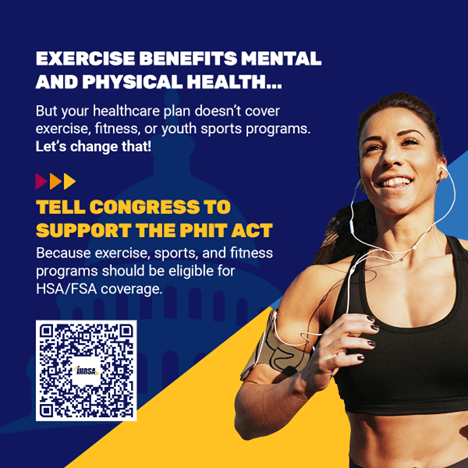

Recovery Health
The Crucial Role of Rest and Recovery in Achieving Your Fitness Goals
In the bustling world of fitness and muscle building, the spotlight often shines brightly on workouts, diets, and cutting-edge supplements. However, there’s a silent hero in this journey that often goes unnoticed: rest and recovery. It’s not just about pumping iron and sweating it out in the gym; allowing your body the time it needs to rest and recuperate is a fundamental pillar of success. In this article, we’ll delve into the importance of rest and recovery, the consequences of inadequate rest, and how proper recovery can propel you toward your weight loss and muscle-building goals.
The Overlooked Power of Rest
You’ve probably heard the phrase “no pain, no gain.” While pushing your limits is essential for progress, pushing too hard without proper rest can lead to more harm than good. Your body doesn’t just build muscle and burn fat during workouts; it undergoes repair and growth during rest. Adequate sleep is the cornerstone of this process. When you sleep, your body releases growth hormone, crucial for muscle repair and development. Sleep also regulates hunger hormones, ensuring you make better food choices to support your fitness journey.
The Consequences of Sleep Deprivation
Now, imagine a scenario where sleep takes a back seat to your rigorous workout routine. You might feel energized initially, but the effects of sleep deprivation will catch up sooner than you think. Hormonal imbalances occur, affecting appetite and potentially leading to weight gain. Your cognitive function falters, impacting decision-making abilities, and your workouts suffer as your strength and endurance decline. Additionally, an overworked body becomes prone to injuries, setting you back further.
Muscle Recovery: The Key to Building Strength
Let’s talk muscle building. You might be surprised to learn that your muscles don’t grow during the workout itself. It’s the recovery phase that facilitates muscle repair and growth. When you lift weights, you create microscopic tears in muscle fibers. These tears are repaired during rest, resulting in stronger and larger muscles. If you neglect recovery, you interrupt this process, hindering your gains.
Recovery Techniques for Muscle Building
- Sleep: Aim for 7-9 hours of quality sleep per night. During deep sleep, growth hormone is released, promoting muscle repair and recovery.
- Nutrition: Consume protein-rich meals after workouts to provide your body with the necessary building blocks for muscle repair.
- Active Recovery: Engage in light activities like walking or yoga on rest days to improve blood flow and reduce muscle soreness.

Weight Loss: The Role of Rest in Shedding Pounds
If weight loss is your goal, rest plays a pivotal role here too. Sleep deprivation disrupts hormonal balance, leading to increased levels of cortisol, the stress hormone. Elevated cortisol levels can result in fat retention, especially around the abdominal area. Furthermore, lack of sleep affects insulin sensitivity, potentially increasing the risk of diabetes and hindering weight loss efforts.
Recovery Strategies for Weight Loss
- Sleep Hygiene: Establish a consistent sleep schedule and create a sleep-conducive environment by keeping your bedroom dark, cool, and quiet.
- Stress Management: Incorporate relaxation techniques such as deep breathing, meditation, or gentle yoga to lower cortisol levels.
- Rest Days: Integrate regular rest days into your workout routine to prevent burnout and give your body time to repair and reset.
Contrast Therapy to Boost Recovery
Polar plunges and saunas are gaining popularity for their health and recovery benefits. Contrast therapy involves alternating between heating up the body and cooling it down rapidly. Also known as contrast bath therapy and contrast water therapy, this ancient technique has been linked to improved blood circulation and reduction of inflammation and pain — especially after injury. It is a common technique used among athletes and has recently been popularized by the sauna and ice bath combo.
A solid starting point is to get in a hot shower for a couple of minutes and then turn the handle to give yourself a blast of cool water. As you get used to the shock, try increasing the duration of the cold portion while reducing the temperature. Don’t like the back and forth? Then simply run a hot bath, soak in it for as long as you like, and then get in a cold shower for anywhere between 30 seconds and two minutes.
Holistic Health: Mind and Body
While hitting the gym is fantastic for physical health, don’t forget the holistic nature of well-being. Both body and mind need rejuvenation. Chronic sleep deprivation not only affects your physical performance but also takes a toll on your mental clarity, mood, and cognitive function. Recovery practices like meditation and mindfulness can support your mental health, providing the mental energy needed for focused workouts and disciplined dietary choices.
In the realm of fitness, it’s easy to get caught up in the excitement of workouts and the allure of quick fixes. However, the true path to sustainable success lies in a balanced approach that encompasses both hard work and smart recovery. Adequate rest isn’t a luxury; it’s a necessity for anyone striving to achieve their weight loss and muscle-building goals. So, the next time you hit the gym, remember that your rest and recovery are just as crucial as your reps and sets. Prioritize your well-deserved rest and let your body thank you with stronger muscles, improved performance, and a healthier, fitter you.
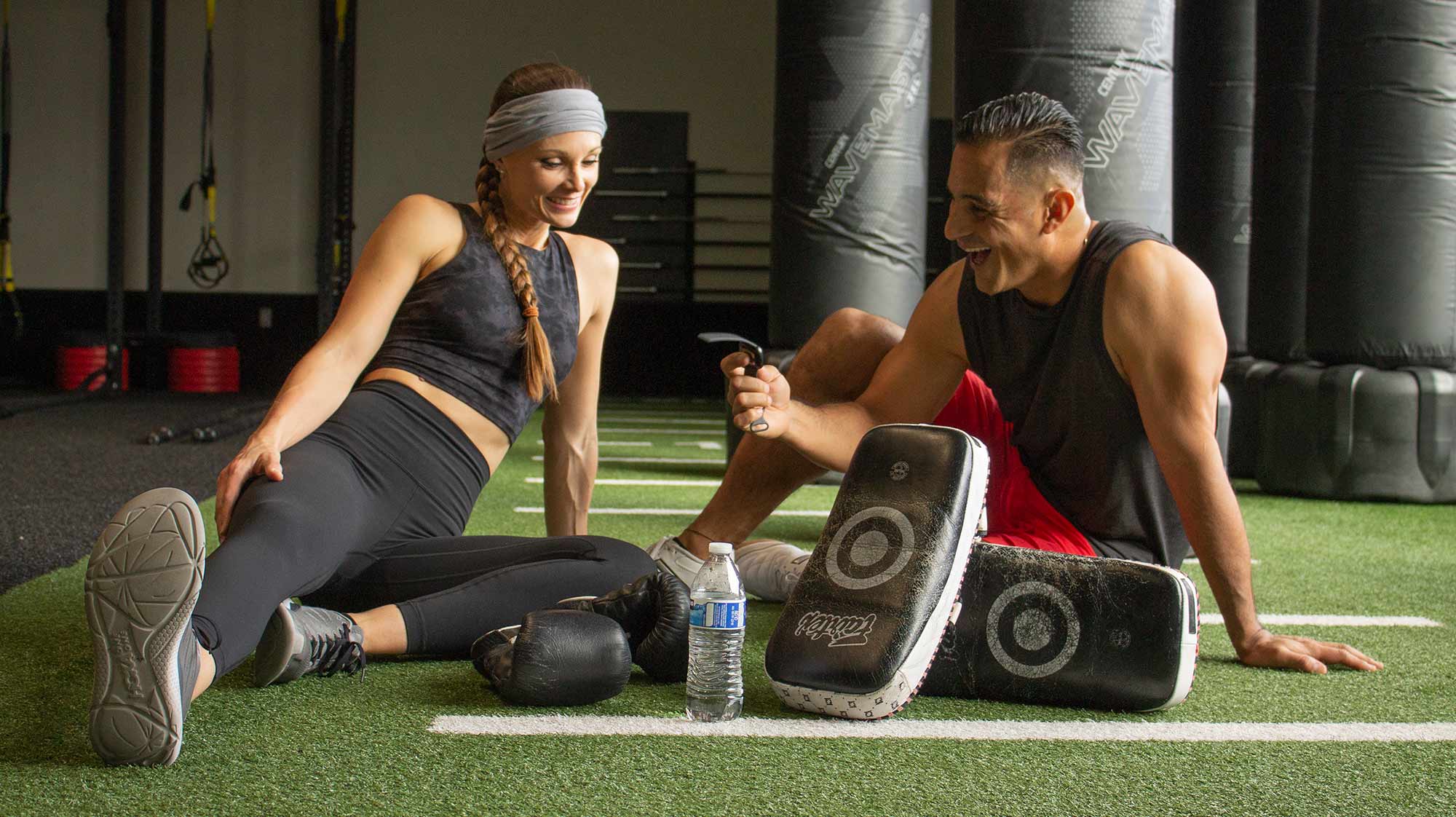
Healthy Lifestyle
The Ultimate Guide to Healthy Work-Life Balance
Author: Erica Hutson
The elusive work-life balance; sometimes, it seems non-existent. Sometimes you may even get a short glimpse before it quickly disappears again. The question is, amidst all the busyness of life, how do you find that balance–and maintain it? Well, keep reading, my friend!
This ultimate guide is here to help you find balance in your life and see that it sticks around! However before we jump into solutions, we must recognize imbalances and warning signs indicating conditions like burnout.
When your body is out of balance, you may start to experience things like:
- Physical illnesses and/or infections
- Body aches or chronic pain
- Depression, anxiety, addiction, or other mental illnesses
- Irritability or difficulty in handling emotions
- Skin rashes and/or acne
- Low energy or increased drowsiness
- Constipation
- Increased stress
- Self-doubt
- Irregular eating habits; lack of appetite
- Cravings for unhealthy things–or super sugary/salty snacks
You know you’re approaching burnout when you start experiencing:
- Lethargy
- Apathy; feeling detached from situations, people, or outcomes
- Feeling that you can’t do anything well
- An increasingly negative viewpoint
- Low/no motivation to do usual tasks
- Inability to make decisions
What causes imbalance and burnout? As you may know, there’s much to keep up with in this modern world. Not to mention the constant overstimulation and the expectations that come with working in this current economy, financial upkeep, relationships, parenting, technology, etc.
Causes of Imbalance and Burnout in a Nutshell:
- Financial stress
- Relational stress
- Lack of proper nourishment
- Lack of boundary setting
- Pollutants/toxins in our environments
- Living life on autopilot (shoulds, go-go-go, lost in the busy)
The list goes, but these are just the big ones. While it’s true that there are many possible environmental stressors, work-life balance is still possible.
It starts with one tiny decision after another. Identify what’s causing you the most stress and make a plan to start there.

Here are ideas on how you can reduce stress, increase joy, and create life balance on a regular:
Focus on your Well-Being Foundation
This is what I like to call “The Big Four Well-Being Pillars”: Eat good food, hydrate more, get better sleep, and engage in daily movement.
- Eat good food that is:
- Non-GMO
- Organic
- Fresh without artificial preservatives
- Local and/or seasonal
- Unprocessed
- Vegetarian (although some bodies need meat too!)
- Hydrate more: Mayo clinic suggests daily 11.5 cups (2.7 liters) for women. This includes 20% of the water that is usually consumed from food. This recommendation also changes depending on your environmental condition, pregnancy, amount of exercise, height, and weight. Keep a water bottle on you and drink it throughout the day.
- Focus on improved sleep: Our circadian rhythms naturally align with the Earth’s light and dark cycles. Sleeping within this cycle (10 pm to 6 am) ensures we get the best rest possible. Goal: Sleep between 7 and 9 hours per night, stop eating 2-3 hours before bed, limit light in your room as much as possible, and keep phones out of the bedroom.
- Do some daily movement: Walk, stretch, run, qigong, yoga, rowing–whatever your exercise of choice is. Do it every day – even if it’s just for 15 minutes! If you need recommendations, LVAC has a list of unique classes that can keep you moving and having fun. Classes hit on two key areas to help you stay balanced: Your physical and mental health. Participating in classes enables you to connect with like-minded individuals while you shed unwanted toxins through sweating!
- If you constantly feel like you have low energy, no matter how much sleep or how well you eat, consider getting a full blood panel done. You may not be getting the proper nutrients and minerals your body needs to feel energized and live optimally.
Nourish Your Personal Relationships
- Nourish the relationship with yourself first: Make time to do more of what you love, whether creating, painting, exercising, or enjoying a bath–whatever brings you true joy and peace.
- Spend time with people who support you and inspire you; set an intention to invite more of these people into your life or make more time for those who are already present.
- Improve boundaries with coworkers, friends, and family:
- Practice saying “no” to things you don’t want to do.
- Practice saying “no” to the people and situations that drain your energy.
- Focus on how good you will feel when you uphold your boundaries.
- Let go of feeling bad, intentionally releasing what others think of you–or what you think they’ll think of you.
- Know that often, the root of relational struggle is that we assume others will automatically know, respect, and uphold our boundaries when this is not the case.
- In setting clear boundaries, communicate clearly, confidently, and calmly. Write them down and rehearse them if you need to!
- Be prepared for people to challenge your boundaries–especially if you’ve let them cross them repeatedly in the past.
- Determine your non-negotiables for balance: Getting your exercise in every day, cooking, or journal writing? Set boundaries around the practices that benefit your well-being –those you know you don’t want to go without.
Decrease Exposure to Environmental Toxins
- Decrease the toxins in your environment as much as possible: Toxins exist in food, drink, alcohol, supplements, make-up, beauty care, and more. Look to reduce consumption or use of products with plastics, metals, chemicals, and preservatives.
Stay Solution-Focused on What You Can Control
- Finances are a great example of an aspect of life that can feel very much outside of our control, but the truth is that there’s always something you can do.
- Identify what you can control. For example, identify what in your finances causes the most stress. Then, determine what steps you can take today to minimize that stress.
- This same process applies to almost any life stressors: 1) Identify what the root issue is, 2) Identify a solution, 3) Identify an action plan, and 4) Act.
- If you need help figuring out where to start in your plan, there are life coaches worldwide who want to help you reduce stress, problem-solve and see you connect with the life you desire.
Be More Present
- Slow down: Begin to notice when you’re lost or on auto-pilot with no breathing room. Stop to close your eyes, take a few deep breaths, and notice your surroundings.
So all this said, here’s the biggest tip for balance: Don’t try so hard to be “balanced.” We create tension in our bodies and minds by pushing things to be a certain way. This tension can lead to imbalance.
The key takeaways:
- Take it as slow as it feels right.
- Don’t try to tackle the world all at once.
- Do what feels right for you at the moment.

Health Tips
In 2023, as we return to a sense of normalcy and recover from a once-in-a-lifetime pandemic, we enter a new era of health and wellness. During the last almost three years, as the pandemic raged on the community most impacted by the virus were the elderly and those with serious underlying health conditions. Moving forward, our takeaway is that a healthy lifestyle has never been more important. In celebration of our 45th Anniversary and this new era of health, we have pulled together our top 45 health tips. We will gradually share the tips over the next three Insiders to make them easier to digest. These 45 health tips should provide a strong foundation for a healthy lifestyle. Although so much has changed, we believe the principles established more than 50 years ago by Jack LaLanne, the Godfather of Fitness, are still true today: Exercise and food are medicine. We can choose to feed our bodies and minds with healthy medicine or choose destructive junk food. “Exercise is King, nutrition is Queen, put them together and you’ve got a Kingdom.” – Jack LaLanne.
- It’s important to take personal responsibility for your health by focusing on health and wellness instead of sickness and illness. Opt for prevention and lifestyle instead of medication and surgery.
- Part of taking personal responsibility for your health is getting an annual physical. No one enjoys going to the doctor, but you can’t get or stay fit if you’re sick. Your yearly physical should include a basic blood panel to check your triglyceride, cholesterol, and blood sugar levels.
- In addition to getting a yearly physical, we recommend taking an InBody body composition analysis to track your progress and determine your baseline health parameters. This will measure your body fat, lean muscle mass, blood pressure, and basal metabolic rate. Please see one of our coaches for the InBody test and watch this video for information on how to interpret your results.
- Download the LVAC app to find out what LVAC offers including your BioAge (relative health age). We advise finding your BioAge as the final metric of your baseline health assessments before setting goals. See one of our Coaches to assist you with your BioAge assessment.
- A crucial part of your fitness journey is setting goals. Once you have all your baseline health measurements, you can then determine how best to proceed. Set SMART Goals by asking yourself: Specifically, what do you want to achieve? How will you Measure it? Is it Attainable? Is it Realistic? What is the Timeframe I will achieve it?
- Use every day as an opportunity to move in a meaningful way. Take a walk with the dogs, or use the stairs instead of the elevator. You can also add some weight to a backpack and walk with it to burn more calories.
- Drink the recommended amount of water daily, 1 oz. per kilo of body weight (100 lbs. equates to about 45 kilos). The InBody assessment also measures hydration levels. Remember 1 glass of water is normally 8 ounces.
- Get the recommended amount of sleep daily; 6-8 hours. This will significantly improve your metabolism and energy. Most people intuitively understand that getting enough sleep improves physical and mental performance and wellbeing.
- The fitness journey is not a straight path. Prepare for setbacks! Just remember that success is determined by perseverance and attainable goals. The more you achieve your goals you will find this to be true… the journey is the destination!
- Build a community or small group to achieve goals and keep a healthy mindset. Social support is critical for most people to achieve their goals. When times are tough, lean on your support team (family, friends, online, etc.) and celebrate the wins.
- Don’t sacrifice strength training over cardio exercise. Longer life and the quality of life is the result of strength training and cardio.
- As the Bible says- take time for rest and recovery. Yoga, meditation, prayer, breathing, sauna, whirlpool/jacuzzi, cold shower/pool, cryotherapy, or percussion therapy with a massage gun or a massage.
- One of the cornerstones of LVAC’s Transform Program is the use of MyFitnessPal for food and exercise journaling. This tool is a great way to stay on course with your weight loss goals and track calories. MyFitnessPal hosts a wealth of health and nutritional tips that will keep you up-to-date and informed. Since MyFitnessPal links to the LVAC app, your Coach or personal trainer can also access all your vital information.
- Get the recommended exercise per week: 150 minutes. Studies show that exercising 20-30 minutes per day can drastically lower your risk of heart disease and stroke — improving your life and enabling you to live better!
- Visualize the win using mental imagery! It will be challenging, but think about what this process will look like, how you will win, and how good it will feel when you do! Look Better, Feel Better, Do Better…Live Better!
- Minimize your intake of sugar, including processed foods with added sugars as it is a major inflammatory. Sugar intake should be limited to 10 percent or less of your total daily calories. Inflammation has been shown to cause pain and poor health. Everyone should be aware of what is in the food they eat, by reading the nutritional label closely.
- Minimize your intake of processed foods: Processed foods are loaded with Omega 6 fats including linoleic acid, primarily in vegetable and seed oils, and too many Omega 6 fats can be very harmful to your health. Too much Omega 6 fats can cause inflammation, which along with sugars can cause major health issues. Overconsumption of Omega 6 fatty acids has been linked to a number of chronic diseases. Instead of vegetable or seed oils use olive oil or avocado oil for cooking, and limit eating out in restaurants which usually cook the food in vegetable oil. Most people are consuming one-third of their daily calories in the form of Omega 6 fats, and that should also be limited to 10% or less. Chicken and pork are also normally loaded with Omega 6 fats.
- Maximize your consumption of whole foods, especially vegetables and fruits. If it comes from a plant eat it; if it is made in a plant avoid it.
- Omega 3 fats/fish oil has been shown to be extremely heart-healthy. It’s important to consume the right balance of Omega 3 and Omega 6 fatty acids, preferably a 2:1 ratio.
- Alcohol and Smoking: Minimize your consumption of alcohol and eliminate smoking for a healthy lifestyle. The consumption of alcohol can also increase iron to unhealthy levels, and one recommendation would be to donate blood to lower iron in your body.
- Vitamins and Probiotics: A daily multivitamin is a great way to make sure you get all the nutrients you need. Along with Omega- 3 fatty acids: Folic acid, or vitamin B9, reduced stroke risk, while CoQ10 decreased all-cause mortality events. Studies have shown that those people impacted with the more serious COVID side effects were vitamin D deficient. Probiotics: Gut health has been shown to be extremely important for your immune system. Keep your gut health with good bacteria, and try to avoid the bad bacteria which cause inflammation and major health issues.
- Flexibility: Increase your flexibility to reduce pain, stiffness, and soreness and avoid injury, as well as improve blood flow and performance. Try a yoga class to improve flexibility.
- Core strength: It’s important to remember to engage your core to reduce injury and improve performance. Core engagement is important when you are working out and in daily life. The core consists of multiple muscle groups including your abdominals, erector spinae, pelvic floor, and diaphragm. They all work together to protect your spine helping to prevent injury. There are many exercises for the core such as planks and hip mobility exercises. See a Coach or personal trainer for suggestions on the best ones to incorporate into your training.
- Don’t overdo it especially if you have taken time off from your exercise program or just getting back into it after a long hiatus. If you rush back into it too quickly the chance of getting very sore is highly likely. It is best to use moderation and start off more slowly, to prevent excessive soreness and pain. Restraint is the better part of valor!
- Motivation is key: Variety helps prevent boredom. Try group fitness classes including Team Training to mix things up, or maybe try some interval training (HIIT) to combine anaerobic, cardio, and strength training into your workout. Try out different pieces of cardio equipment, such as the Octane ZeroRunner, the Freemotion Incline Trainer, or the Technogym Skillmill (all three either are hybrid treadmills or simulate running on a treadmill). Try out more advanced free-weight equipment, such as the Smith Machine or the plate-loaded Hammer Strength machines. Try to find equipment or machines that are fun to use, as the enjoyment of the exercise will continue to motivate you.
- Tone down technology: Studies have shown that spending too much time in front of a screen (tv, computer, or phone) can increase stress, especially before bedtime, and disturb your normal sleep cycle. While watching tv try doing planks or crunches, or other types of core work to improve hip mobility or lower back and abdominal strength. See the last installment of health tips and the importance of sleep. When you are in front of a computer screen try standing, which is recommended for your lower back and core.
- Consider a membership that includes personal training or the services of a personal trainer. Personal training can help with setting realistic goals, maintaining motivation, and designing the best combination of exercise and nutrition to maximize your workouts and goals.
- Posture… Poise… Perception: Physical activity and especially strength training improves posture. Men and women who have an athletic physique generally have great posture and are perceived differently as far as overall poise and in a positive light.
- Positivity/Negativity: Studies have shown those people who get the recommended amount of exercise per week (see last week’s health tips) have a more positive outlook on life. Exercise decreases stress levels, which leads to a more positive lifestyle. We should try and feed our minds with positive thoughts and minimize the negative thoughts, by limiting social media or other stressful information we allow into our brain. The seven-time Mr. Olympia and former Governator of California, Arnold Schwarzenegger, recently shared his tips for smashing New Year goals. “Negativity freezes you. It makes you depressed about where you are instead of excited about where you can go.”
- Stress: A little bit of stress is fine, in fact, you need to stress your muscles so they grow, but chronic stress can take dangerous tolls on your body. Too much stress is very negative and leads to depression and mental health issues. Heart attacks and emotional eating disorders are just a couple of ways stress can manifest itself in our lives. Pay close attention to your stress levels and realize if you need to take a break to recharge (vacations are always helpful)! Nature is also a powerful source of meditation, allowing us to destress from our busy lives. Nature’s beauty has to be one of the best ways to heal, from the damage caused by too much stress. Cortisol is the stress hormone, and it plays a major role in metabolism. Cortisol is released when we are under stress, but when cortisol levels are constantly high due to chronic stress it can cause a host of different health problems including raising blood sugar too high resulting in type 2 diabetes.
- Education- going along with the first Health Tip of taking personal responsibility, is the ongoing process of continued education in search of prevention and lifestyle choices. One area of recommended study would be functional medicine, which focuses on the cause of sickness and disease, while medication and drugs typically focus on the symptoms. Functional medicine specializes in nutritional science since food is medicine. Functional medicine also focuses on genetic, environmental and lifestyle factors for a holistic approach to medicine. One of the earliest practitioners was the Godfather of Fitness, Jack LaLanne, with his “exercise is King, nutrition is Queen, put them together a you’ve got a Kingdom”. Today, Dr. Mark Hyman is one of the leading authorities in the area of Functional Medicine.
- Know your MACROS- Macros are short for Macronutrients. There are three macros when it comes to food; protein, fat and carbohydrates. In terms of calorie density per macro, protein and carbohydrates supply 4 calories per gram, while fat on the other hand supplies 9 calories per gram. There is a myth around the more fat you eat the more calories you consume, since the more protein and carbohydrates you eat you also consume more calories. Another way to look at calorie counting involves how many calories you are consuming of each macro. Modern day science tells us why “a calorie isn’t just a calorie” when it comes to counting calories and weight loss. Today- common knowledge tells us that it is not about eating less but it’s about eating better. In the past while the obesity epidemic exploded people were being told to eat 50% or more of their diet in the form of carbohydrates, and a lower percentage of dietary fats. But that has changed to minimizing certain types of fats like Omega-6. See the last installment of the health tips about minimizing Omega-6 fats. Now- the recommendation is for equal parts of protein and carbohydrates, with 30% of your daily caloric intake coming from fat.
- TRY: TRE- Going along with the strategy of eating better is intermittent fasting. Try- Time restricted eating (“TRE”) where you eat in a 6-8 hour window between your first meal and your last meal of the day. Time restricted eating has age reversing benefits. “Turn back the hands of time”!
- FIND: FUN- find something you enjoy. Being healthy doesn’t have to be hard or feel like a chore. Find an activity you actually enjoy doing, you’ll be intrinsically motivated to stick with it. Find a meal plan you actually like eating, you don’t have to force feed yourself kale or broccoli to be healthy. Find a group you like being with, you’ll all keep each other motivated and accountable.
- DETOX- we all know processed foods can be harmful, or at least the seventeenth Health Tip describes this, you might want to consider an elimination diet or cleanse protocol to reduce excess levels of foods known to cause inflammation. The elimination of certain foods to reduce excess levels of gluten, sodium, sugar and dairy to name just a few of the well known culprits. After a few days to a couple of weeks you should start feeling lighter, less bloated, cleaner, and better than ever.
- Don’t overlook the PPIT- the psoas, piriformis and illiotibial band. Since most of us spend most of our days sitting the PPIT structures can be held in a constantly tightened state resulting in pain, reduced flexibility, and increasing our risk of injury. Foam rolling is a fabulous way to relieve these body parts, as well as many different types of hip mobility exercises and stretches.
- Did you know you can change your hormonal state with a thought? Studies show our mind can not tell the difference between something we vividly imagine or something we actually experience. So just thinking of a stressful situation raises your cortisol level. Conversely, focusing your mind on moments and people fills your heart, mind and bloodstream with “feel good hormones” like dopamine and serotonin. Dopamine and serotonin decrease stress, increase motivation and elevates your mood… all with a thought. When there is too much stress it raises cortisol to higher levels and causes inflammation in the gut, and triggers inflammation throughout the whole body. Processed foods and alcohol decrease testosterone, and strength training with heavier weights especially compound movements such as squats and deadlifts increases free testosterone.
- Another valuable health assessment of your overall fitness level is called VO2 Max. Your VO2 Max shows how well your heart pushes blood to your muscles when you are exercising, and how efficiently your muscles are able to utilize the oxygen from your blood. As you breathe in oxygen, it powers a metabolic reaction within your muscle cells that gives your muscles energy called adenosine triphosphate (ATP). Having a higher VO2 Max typically means you’re in better cardiovascular shape, and you can also increase your VO2 Max by losing body fat. While VO2 Max tends to decrease with age, and body fat tends to increase with age, healthy exercise and eating can certainly minimize the trend.
- Get the family involved- whether it is cooking a healthy meal, or some activity like going to the gym, getting the family involved will build and strengthen family bonds. Getting the family involved will also make memories, and get everyone aligned on a healthy lifestyle. Your children can now go to LVAC and workout with you starting at 12 years old!
- Go to the dentist- bad dental hygiene has been linked to health complications throughout your body. Get to the dentist regularly, preferably twice a year, as the trip to the dentist is also part of personal responsibility.
- Go to the dermatologist- the health of your skin, and protecting your skin from too much sun exposure, is critical for continued good health. The Vitamin D that comes from the sun is very important, but too much sun exposure has been linked to skin cancer.
- RUN- Avoid toxic people. Negativity is contagious and if there are negative or harmful people in your life, RUN as fast as you can in the other direction. They will contaminate your mindset, bring down your mood, and stress you OUT!
- Laughter is the best medicine-it releases endorphins which reduce stress, relaxes your body, reduces pain and boosts your mood. It also boosts your immune system and strengthens your heart. As we mentioned at the beginning of the first installment of health tips, exercise and food are medicine, and the best medicine is laughter.
- Gratitude is like laughter- it is very hard to be negative when you are expressing gratitude. Gratitude is a positive feeling of being thankful and appreciative, and has been linked to several mental and physical health benefits. When you are feeling grateful for something or someone in your life you generally respond with feelings of kindness, warmth and generosity.
- Encourage someone else- take someone under your wing and help them to lose weight/bodyfat, get stronger and build lean muscle mass, and to be healthier. Mentor someone towards a healthy lifestyle.
- Metabolic flexibility- allows for improved energy efficiency, including supporting optimal glucose regulation, and preventing insulin resistance. If your glucose levels are too high, the cells that make insulin in your pancreas become dysfunctional. Eventually, higher levels of glucose can lead to diabetes, high blood pressure and high cholesterol, and minimizing the intake of sugar and processed foods leads to metabolic flexibility. There are other long term effects of insulin resistance such as your body’s inability to use its fat stores (burn fat) leading to obesity. Furthermore- insulin resistance can alter the mass, structure, and function of the mitochondria in your cells.
- 30,000,000,000,000 (30 trillion)-that’s how many cells you have in your body. Mitochondria are the powerhouse of your cells. They are the powerhouse of the cell because they make a majority of the ATP (adenosine triphosphate), which is a molecule the cells use as a source of energy. Mitochondria use oxygen to break down glucose-derived products into carbon dioxide and ATP. But when the mitochondria are malfunctioning due to insulin resistance, creating higher glucose levels, they produce too many free radicals. This oxidative process can lead to illnesses including cardiovascular disease, cancer, Parkinson’s Disease, and diabetes.
- It’s your third place- after work and home, the gym is a healthy place to connect with like-minded people. It’s a social place to help alleviate isolation and loneliness, and we all know after COVID that we are better together. We are all aware that loneliness and isolation can lead to depression, anxiety and mental illness. The gym should be your happy place, where people come together in a fun and enjoyable environment to pursue the common purpose of a healthy lifestyle.
- Mental health- nearly 20% of us live with a mental illness. That means that most of us will either personally deal with mental illness, or know someone whether they are family, friend or associate feeling the effects of anxiety and depression. Most of us know that exercise can reduce the risk of depression and anxiety as well as boost a person’s mood. There is also evidence that people who exercise at least moderately have significantly higher happiness and life satisfaction compared to the less physically active. However, when mental illness becomes overwhelming please seek the help of a professional. We will all, unfortunately at some point, know of someone who is very physically fit but has a life-threatening mental illness. Love thy neighbor- and help them find someone before it’s too late.
- As the Bible says- love thy neighbor. This year we witnessed helping your neighbor in early January when Damar Hamlin fell to the ground on a football field, after experiencing a cardiac arrest. Trainers rushed to his aid and administered CPR. Be prepared to help your neighbor by being ready to do CPR or use the AED device, because you could be faced with a similar life-or-death circumstance.
- Don’t compare yourself with others- everyone’s situation is different. Social media has made it very easy to feel inadequate and very self conscious about apparent shortcomings. DON’T BUY INTO IT! All you can do is the best you can do every day. If you’re doing that then give yourself a pat on the back, rather than punishing yourself by comparing your real life to someone else’s perfectly filtered digital life. Remember the words of Rudy Smith- “There is no such thing as staying the same. You are either striving to make yourself better or allowing yourself to get worse”.
- Park at a distance- don’t fight over the closest parking spot, park further away and get some extra steps in through your day. If you are fighting for that closest spot you will make yourself all stressed out, before you even enter the gym.
- Martial arts is a fabulous way to get the benefits of exercise without feeling like you’re exercising. Boxing and kickboxing classes can also be fun, and take your mind off the exercise. Plus you’ll get quite a boost of confidence and stress relief at the same time. Swimming is also a total body workout, and may feel a lot less like exercising for some people.
- Box breathing- a simple breathing exercise shown to help with stress, emotions and hunger. Inhale for 3 seconds, hold your breath for 3 seconds, and exhale for 3 seconds. Wait for 3 seconds before you inhale again. You can repeat this pattern for 5-10 minutes . Once you feel like you’ve mastered this breathing pattern try and increase the time from 3 seconds to 4 seconds, and then onto 5 and so on.
- Be realistic- having a positive mindset is incredibly important, but don’t be unrealistic. For example, setting a goal of exercising everyday at 5 am when you haven’t got out of bed before 7 am for 5 years might not be a realistic goal. And failing to even reach unrealistic goals can put a damper on motivation and your mood, and be the start of a devastating downward spiral.
- Plan ahead and make it easy- if your plan is to hit the gym or go on a walk every morning as soon as you wake up take steps the night before to ensure that happens. For example, you could layout your clothes, shoes and water bottle the night before, or pack your workout bag the night before. So as soon as you wake up get yourself dressed or grab your workout bag and you’re out the door. Or another example, if you want to try and not eat processed foods or go out to eat at a restaurant, the night before make all of your food for the following day.
- Have a back up plan- if you fail to reach a goal or a certain milestone, don’t beat yourself up, just activate your contingency plan. Remember- the fitness journey is not a straight path, so prepare for setbacks.
- Generosity and Gratitude- these two are tied together. Be generous- studies show that it is truly better to give than receive. People who tithe, donate, and/or volunteer their time have better self esteem and a better self image than those who do not. Be generous with your time by helping other people. Love thy neighbor and pay it forward! Generosity is associated with an abundance, and most people who are given an abundance of something are grateful for their blessings.
- Alzheimers and Dementia- regular physical activity benefits the brain. Studies show that people who are more physically active are less likely to experience a decline in their mental function and have a lowered risk of developing Alzherimer’s disease or dementia. The same is true with the foods we eat and the affect on an aging brain’s ability to think and remember.
- Alternative medicine- if exercise and food are medicine, and laughter is the best medicine, then alternative medicine is another integral part of optimal health. Regenerative or precision medicine is another class of alternative medicine, including stem cell therapy, NAD supplementation, IV Therapy, platelet-rich plasma PRP therapy, sauna/ice baths, breathing exercises, neuro-linguistic programming NLP, as well as breakthroughs in the treatment of clinical depression. The more traditional forms of alternative medicine are acupuncture, chiropractic care and physical therapy. And of course Functional medicine can be grouped together with Alternative medicine.
